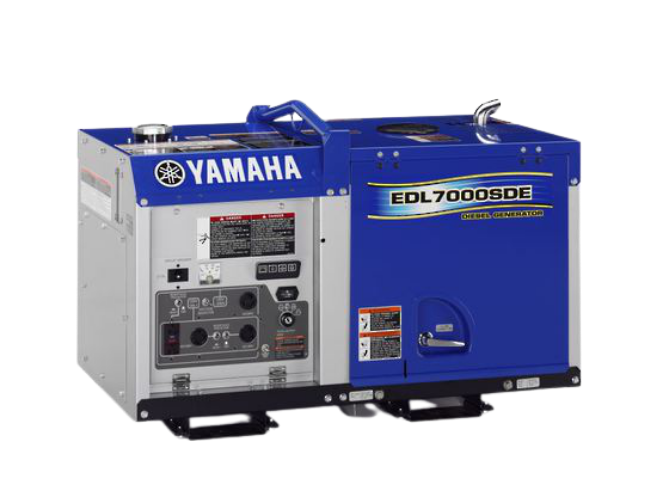The Unique Yamaha Advantage
Yamaha Generators are designed to supply powerful electricity everywhere and anytime.
Inverter Generators
The Yamaha Generator features a lightweight, compact body and portability. It is very convenient to put in your car and optimal for use in camping.
At construction sites
Yamaha Generators have excellent durability and powerful generation ability. They also consume less fuel for an economic power supply.
For restaurants, shops & outdoor markets
Yamaha Generators run very quietly and are perfect for use in stores and market stalls. You can illuminate the exterior and run the eftpos, making the appearance and convenience more attractive to the customers.
For outdoor work
The Yamaha Generator features ensure it is easy to operate and can be used outdoors. It can really show it’s worth and performance on construction sites and in remote areas.
For photographers
Yamaha Generators are useful when taking photographs and filming for a long period of time. It can, of course, supply extra electricity for lighting effects at night, too.
For anything
The inverter model is also available and designed to supply perfectly stable electricity, even better than a domestic power supply. It can be also used as a power supply for micro-computer assisted power tools.
CONVENTIONAL INDUSTRIAL SERIES 4 STROKE GENERATORS
Features and Equipment to Meet Various Applications.
0101. No more complicated, bothersome maintenance
Because Yamaha generators adopt a brushless type generating mechanism, there is no bothersome maintenance like the changing of carbon brushes. Also, because these generators have a maintenance-free electronic ignition system, you are ensured smooth starting and stable performance. Other important features like Stellite-faced exhaust valves and cast iron sleeve cylinders ensure unmatched durability for the kind of reliable, carefree power supply you want from a generator.
0202. Designed for quietness and low vibration
The large noise-absorbing muffler means extra-quiet exhaust while the large air cleaner also reduces intake noise. What's more, optimization of the shapes of the engine's moving parts effectively reduces mechanical noise as yet another part of Yamaha's comprehensive noise-reduction design. Meanwhile, rubber engine mounts help eliminate annoying vibration.
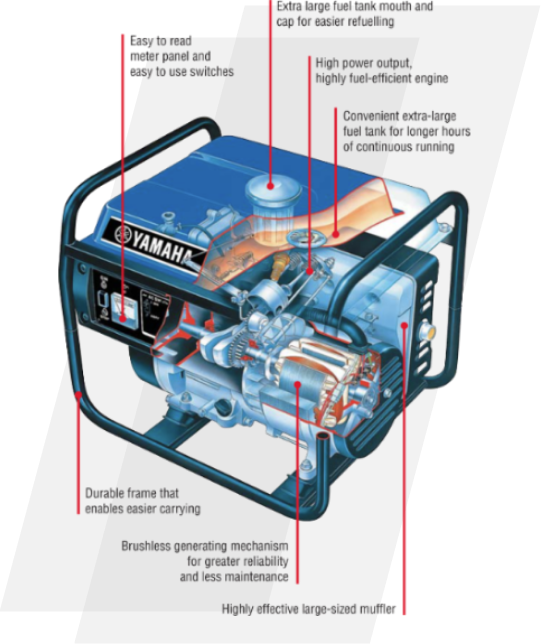
0303. Long running time and outstanding economy
These generators are powered by highly reliable OHV engines known for excellent combustion efficiency and high power output. These engines are also characterized by low oil consumption. That means you get the electrical power you need at an economical running cost.
0404. Performance that is one rank higher
Compared to other generators in the same class, Yamaha generators have larger displacement engines that ensure power to spare and performance that is the best in the business.
Damper Winding Adopted for Greatly Reduced Waveform Distortion Ratio
Adding a damper winding (short-circuit ring) to the alternator’s rotor serves to correct the distortions in magnetic flux occurring during electricity generation and makes it possible to greatly reduce waveform distortion ratio by adding a skew to the alternator core. This greatly expands the range of electric appliances the generator can be used with to include those operating with microcomputer control, such as air-conditioners, computers and uninterruptible power supply (UPS) systems that require quality electricity. FW series generator is a wave distortion ratio of about 6.2% at a rated load connection.
Effect of Damper Winding Function on Wave Distortion Ratio
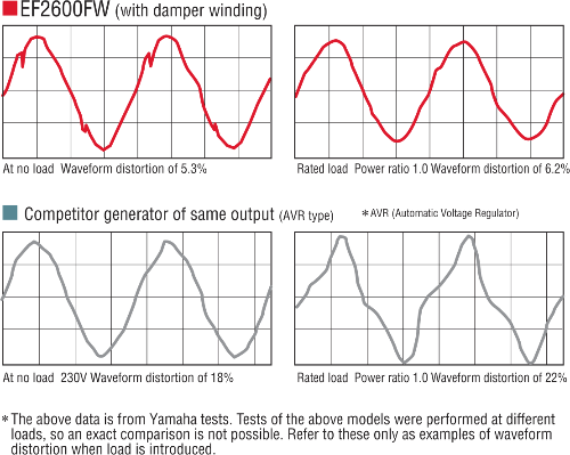
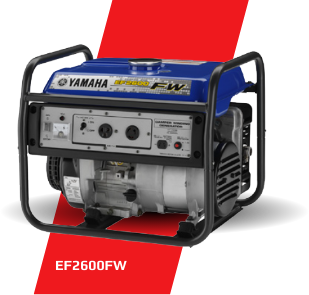
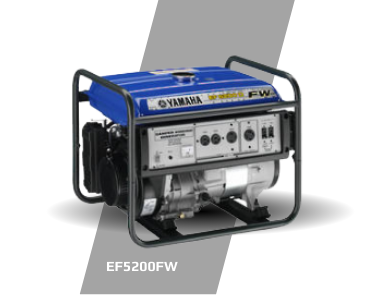
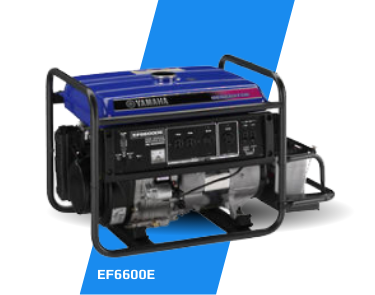
Inverter Models
Features and Equipment to Meet Various Applications.
You bring the task - we’ve got the power!
Light, quiet, portable and easy to use…
Yamaha generators are quickly becoming the industries and serious campers workhorse of choice.
Yamaha’s portable range of 4-stroke petrol powered inverter generators are the new wave in generator technology for when you need clean, high quality electricity in a compact and light weight package. This means they are easy to transport whether operating equipment in the field, four-wheel-driving, camping, fishing, using power tools or overcoming a power outage.
What is an Inverter System?
An Inverter System stabilizes the amount of voltage and frequency produced by a petrol-driven alternator through the supply of “sine wave” electricity. That’s why Yamaha inverter generators are the ideal power source when using precision equipment or microcomputer controlled electrical appliances.
More controlled, clean power
Yamaha’s Inverter System produces AC current within a controlled electrical circuit process, known as PWM (Pulse Width Modulation). As a result, fluctuations in engine speed do not affect the voltage or frequency of the electrical output while at the same time reducing output emissions.
Multi-Polar alternator system
The adoption of a Multi-Polar Alternator enables the generation of more efficient, high-frequency, 3-phase AC current that the inverter then turns into single phase electricity. The high efficiency alternators on a Yamaha inverter achieve a much lighter and more compact generating unit than conventional 2-pole rotor type alternators.
Economy idle control
Bringing along a generator was never quieter or easier. That's why Yamaha created Smart Throttle™, a feature that automatically adjusts the engine speed to precisely match the load. Smart Throttle™ allows the generator to run quietly while increasing fuel efficiency, prolonging engine life and extending running time between refuelling.
Advanced sound reduction
Generating electricity used to be a noisy task. That's why Yamaha created Noise Block™, an acoustically engineered sound reduction system. Noise Block™ technology utilises various sound absorbing materials, moulded cases, an intake silencer, fibre glass insulation, plus uniquely designed mufflers and fans to provide virtually silent running whilst maintaining quality performance. It also reduces electrical interference with TV and radio signals.
Less than 2.5% distortion ratio
This means Yamaha inverter generators can be used with equipment that requires stable frequency and voltage, as defined by an ideal “sine wave” when graphed, like products with built-in computer functions and microcomputer controlled equipment (e.g. power tools and projectors).
Features to look for
TwinTech™ (Parallel Use Function)
Hook up two generators of the same specification for almost double the power output, while retaining the same voltage and frequency of a single unit. Only available with models EF2000iS and EF2400iS.
Electronic Circuit Breaker
Cuts off current when output voltage exceeds the designated maximum output capacity.
4-Stroke OHV Engine
Powerful performance, precise valve actuation, excellent heat dissipation, low fuel consumption and reduced noise level.
Oil Warning System
Engine stops automatically when oil level is low, prevents engine damage and minimises costly repairs.
Electric / Non-Fused Overload Breaker
Prevents generator damage in case of overload.
Auto Decompressor
Light recoil starting reduces compression for effortless starting.
Petrol Petcock
Reduces carburettor contami- nation during storage by turning off petrol flow and allowing the carburettor to run dry.
DC Output Capability
Convenient for battery charging.
Fuel Gauge
Displays fuel level without having to open the fuel cap.
Electric Starter
Provides effortless starting, electric motor cranks generator until it starts.
Voltage Meter
Voltage confirmation at a glance.
Brushless Alternator
Minimal maintenance, hassle-free service and clean output.
Long Range Fuel Tank
Improved efficiency and longer running time.
USFS-Approved Spark Arrestor
Keeps sparks from exiting exhaust system to reduce risk of errant sparks causing a fire
Perfect power!
“Sine wave” electricity for precision machinery The alternate current is generated by means of an inverter system. This inverter system employs Pulse Width Modulation (PWM) to output high-quality “sine wave” electricity. This means it can be used safely with precision equipment like a microwave oven, PCs and appliances with microcomputer functions.
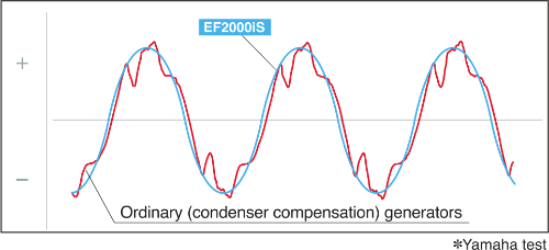
Waveform distortion of under 2.0%
This generator can be used for appliances that require “sine wave” electricity, such as appliances with built-in microcomputer units or microcomputer control systems.
Merit of multi-polar alternator
Adoption of an inverter system enables the alternator to generate highly efficient high-frequency 3-phase AC current.
The alternator for inverter generators is a multi-polar type composed of two 18-pole stator coil(s) and a rotor with six permanent ferrite magnets. Adoption of this highly efficient alternator makes it possible to achieve a dramatically lighter and more compact unit compared to conventional alternators with bi-polar synchronous rotors.
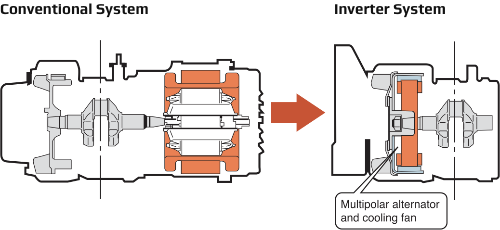
A wave distortion ratio of less than 2.0% is achieved. This model can be used with equipment that requires stable frequency and voltage (as defined by an ideal "sine wave" when graphed), like products with built-in computer functions and micro computer -controlled power tools or equipment like projectors.
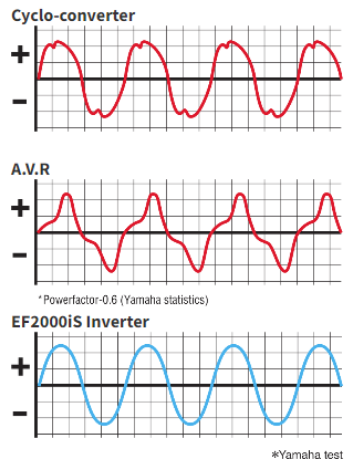
Power Requirements
Calculating your total power needs
- Firstly, list the item you need to run that has the highest starting wattage.
- Then take the running wattage of this item and add to it the running wattage of all the other items you need to power simultaneously. This is your total running (rated) wattage requirement.
- Next, take the start up wattage of the same item and add to it the running wattage of all the other items you need to power simultaneously. This is your start up (maximum) wattage requirement. You should try to pick a generator with the power outputs that are greater than the totals you calculated above.
| Appliances / Tools | Approx. Run (W) | Approx. Start (W) |
|---|---|---|
| Microwave 750 | 750 | 100 |
| Coffee Maker | 1750 | 1750 |
| Electric Clothes Drier | 5750 | 5750 |
| Washing Machine | 1150 | 2300 |
| Refrigerator | 700 | 2200 |
| Jug | 100 | 100 |
| Lights | 2000 | 2000 |
| Electric Frypan | 1500 | 1500 |
| Dehumidifier | 400 | 400 |
| Fan Heater | 2000 | 2000 |
| Dishwasher - Cool Dry | 1500 | 1500 |
| Dishwasher - Hot Dry | 400 | 400 |
| Toaster - 2 Slice | 1250 | 1250 |
| Toaster - 4 Slice | 1600 | 1600 |
| Freezer | 2200 | 2500 |
| Hair Dryer | 800-1700 | 800-1700 |
| Steam Iron | 1800 | 1800 |
| Garage Door Opener - 1/4 HP | 550 | 1100 |
| Garage Door Opener - 1/3 HP | 725 | 1400 |
| Radio | 200 | 200 |
| Blender | 375 | 500 |
| Sump Pump 1/2 HP | 1050 | 2150 |
| Well Pump 1/2 HP | 1000 | 2100 |
| Household Water Pump | 1200 | 2700 |
| Halogen Work Lamp | 500 | 500 |
| Appliances / Tools | Approx. Run (W) | Approx. Start (W) |
|---|---|---|
| Central Air Conditioner: | ||
| 10,000 BTU | 1500 | 2200 |
| 24,000 BTU | 3800 | 5000 |
| 32,000 BTU | 5000 | 6500 |
| Room Air Conditioner: | ||
| 10,000 BTU | 1500 | 2200 |
| Circular Saw 7 1/4” | 1400 | 2300 |
| Chainsaw 2HP | 1300 | 3000 |
| Portable Air Compressor | 1200 | 3600 |
| Hand Drill 1/2” | 600 | 900 |
| Drill 1/2” - Cool Dry | 600 | 900 |
| Battery Charger 15 amp | 500 | 700 |
| Electric Welder 200 amp AC | 9000 | 9000 |
| Jigsaw | 300 | 400 |
| Electric Weed Trimmer | 500 | 800 |
| Router | 1000 | 1300 |
| Belt Sander | 1000 | 1300 |
| Table Saw 10” | 1750 | 4250 |
| Bench Grinder | 1400 | 2450 |
| Concrete Mixer 3.5c/f | 1900 | 2500 |
| Band Saw | 1100 | 1500 |
| Power Drill - Medium | 1000 | 1500 |
| Power Drill - Heavy Duty | 1500 | 2000 |
| Angle Grinder - 100mm | 1000 | 1500 |
| Angle Grinder - 230mm | 2400 | 3000 |
This chart lists average power requirements. Your particular tool or appliance may require more or less than the listed wattage.
* Where START wattage is the same as RUN wattage, this signifies no additional power is required for starting.
Choosing A Generator
Features and Equipment to Meet Various Applications.
1. What do you need to power?
The first question when selecting a generator to meet your requirements is “What am I wanting to power, both now and in the future?”
2. Make a list
Make a list of the appliances, tools and lighting that you want to use simultaneously. How many lights will you need to run alongside your powertools? Will you need to run the oven as well as the microwave at the same time?
3. Note the wattage required
The list on the previous page offers a guide on the wattages used on most common appliances and items used at home and in the workplace. For exact figures we recommend you check the nameplate or instruction manual for your individual appliances. Also listed (where applicable) is the “starting wattage” or “surge wattage” which is the amount of wattage needed to start an appliance with a motor. This may be up to three times the wattage required to run the appliance, so this must be taken into consideration.
All generators also have a maximum and rated wattage output. Rated power is the level where the generator can be operated continuously. Yamaha generators, due to the fact that they are built super strong, can handle peak start-up current requirements well in excess of other models on the market. However it pays to be aware that tools like compressors have very high (up to three times) start-up current requirements that need to be allowed for.
Other generator selection criteria includes:
- Weight I portability
- Operating sound levels
- Engine type (4 stroke or diesel)
- Fuel capacity
- Starting system (electric or recoil)
- Investment cost
Portable Generators
A portable generator consists of two main components, a gasoline or diesel powered engine and an alternator. The alternator consists of a rotor (rotating) inside a stator (fixed).The engine power is used to rotate the rotor inside the stator which generates AC power. Portable generators have many applications at work and around the home and have made outdoor events and projects much easier to tackle.
The YAMAHA range of generators take this convenience and portability to another level with the latest technology and functions.
Traditional Style Generators
Traditional portable generators produce power by using an engine to rotate two large coils of wire (the rotor) inside a circumference of magnets (the stator). Each full rotation of the engine produces one complete sine wave of AC power. Therefore the engine must maintain a constant speed of 3000RPM to produce the standard of 50Hz. (3000 revs / 60 seconds (1min) = 50Hz). No matter what the load, a traditional style generator must run at consistent speed to provide the correct power.
Inverter Generators
An Inverter Generator is normally used where power is required for sensitive electronic equipment like PCs, TVs and instrumentation. They are also chosen when portability or size is important and where noise must be kept to a minimum.
Comparing Yamaha Models
Model
Type
Rated Output
Max. Output
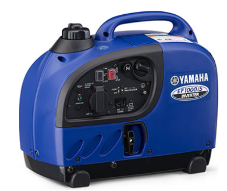
EF1000iS
Inverter
0.9kVA / 900W
1kVA / 1000W
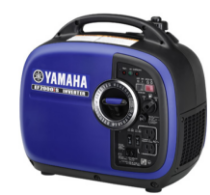
EF2000iS
Inverter
1.6kVA / 1600W
2kVA / 2000W
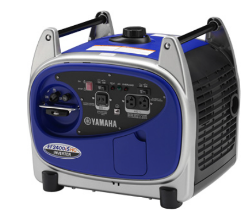
EF2400iS
Inverter
2kVA / 2000W
2.4kVA / 2400W
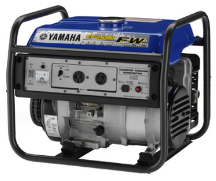
EF2600FW
AVR
2kVA / 2000W
2.3kVA / 2300W
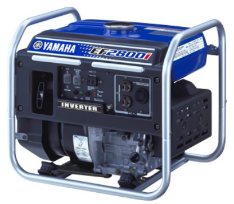
EF2800i
Inverter
2.5kVA / 2500W
2.8kVA / 2800W
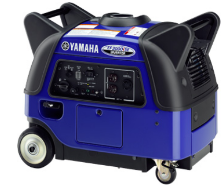
EF3000iSE
Inverter
2.8kVA / 2600W
3kVA / 3000W
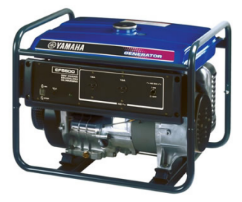
EF5200FW
AVR
3.8kVA / 3800W
4.5kVA / 4500W
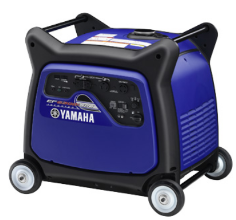
EF6300iSE
Inverter
5.5kVA / 5500W
6.3kVA / 6300W
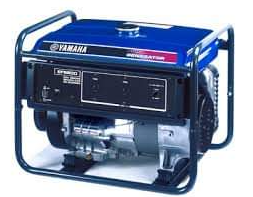
EF6600E
Exciter with AVR
5kVA / 5000W
5.5kVA / 5500W
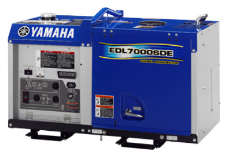
EDL7000SE
AVR
5.5kVA / 5500W
6kVA / 6000W
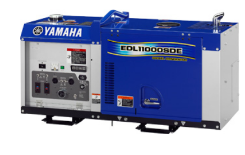
EDL11000SE
AVR
8kVA / 8000W
8.8kVA / 8800W
